15. How well does methadone maintenance work?
| Reports - Consumers Union Report |
Drug Abuse
Chapter 15. How well does methadone maintenance work?
The number of patients on the Dole-Nyswander program increased from 6 when Dr. Dole first discussed the program with Dr. Trussell early in 1965 to 1,866 on October 31, 1969. During the following year, the number almost doubled--- to 3,485 on October 31, 1970 . By then there were 42 centers in New York City, plus in Westchester County, distributing methadone to patients under the Dole-Nyswander aegis. In addition, there were numerous city, state, and private methadone maintenance programs in the New York area, and a number of physicians were prescribing methadone maintenance for their private patients. The discussion below concerns primarily the 3,485 patients attending the 46 Dole-Nyswander clinics, since the data available on these patients are among the most complete and most reliable in the entire history of addiction treatment programs.
At Dr. Dole's request, Dr. Trussell arranged for the establishment of an independent "evaluation unit" in the Columbia University School of Public Health. This unit is not responsible to Dr. Dole but to an independent committee, which includes a number of the country's outstanding authorities on narcotics addiction and on drug research. Dr. Henry Brill, New York State Associate Commissioner of Mental Health and chairman of the American Medical Association Committee on Narcotic Drugs, was selected as chairman of the evaluation committee. A few years before, following a study of narcotics addiction policies in Great Britain, Dr. Brill had published a report declaring that American addicts should not be supplied with drugs. Another member appointed to the committee, Dr. Donald B. Louria, was also at the time of his appointment an outspoken opponent of maintenance programs. As operating chief of the evaluation unit, Dr. Frances Rowe Gearing was selected--- a public-health authority widely known for her independence of mind and judgment. Thus the cards were stacked against over optimism in several ways--- by selecting as the evaluation center the same school of public health that had revealed the zero success rate of the Riverside program, by selecting an evaluation chairman opposed to maintenance programs, and by providing that the evaluation unit should assemble data independently, in addition to reviewing the data supplied by Dr. Dole. Data collection and the publication of interim reports were to proceed simultaneously with the experiment, so that failure would not be discovered too late, after many millions had been spent--- as in the case of the Riverside and New York State programs.
Dr. Gearing reported on the Dole-Nyswander patients at three methadone maintenance conferences held in New York in 1968, 1969, and 1970; Dr. Dole also reported at each of these conferences. The details below are based on all six reports.
Among the first 2,325 patients admitted to the Dole-Nyswander program after January 1964, all but 459 were still on daily methadone in October 1969--- a dropout rate of 20 percent. By October 1970, admissions had increased to a total of 4,376--- but the dropout rate remained 20 percent. Thus the methadone maintenance "success rate" might from one point of view be considered 80 percent.
It is important to note, however, that in this and other methadone maintenance programs, methadone per se is successful in 100 percent of all cases, or virtually 100 percent, if success is defined as it is for other drugs. Insulin, for example, lowers the blood sugar level in very nearly 100 percent of all diabetes patients. Methadone similarly relieves the craving for heroin in all or substantially all heroin addicts.
There is another sense, however, in which methadone is not quite that successful. The parallel with insulin will explain this discrepancy. If a significant proportion of diabetics were to try insulin for a while and thereafter refuse to take it any longer, we would conclude that the drug was a therapeutic failure in such cases even though it was a pharmacological success. Applying this standard to the Dole-Nyswander program, the success rate is about 97 percent; only 3 percent of those entering the program drop out voluntarily. (The reasons for higher voluntary dropout rates in less successful methadone maintenance programs are discussed in Chapter 18.)
One percent died,* and might also be deemed failures. When it is recalled, however, that these were all hard-core addicts, who had in the past injected heroin daily for years, that 75 percent of them had damaged livers before coming on the program, and that they suffered on admission to the program from the many other health handicaps, reviewed earlier, common to poverty-stricken addicts dependent on high cost, adulterated, and contaminated heroin, the deaths must be attributed at least in part to the sequelae of being a heroin addict rather than to methadone failure. In many or most fatal cases it would be reasonable to conclude that death ensued because methadone came too late. These were like the casualties occurring in a war after a truce had been agreed to--- or like the diabetics who continued to die prematurely for several years after insulin became available in 1923.
![]()
* This was the first narcotic addiction program in which "success" was evaluated with the help of effective urine tests.
![]()
A third standard of success which might be set is abstinence from heroin. This standard, in turn, depends on whether abstinence is defined absolutely or relatively. Addicts on the program who use any drug to excess--- alcohol, barbiturates, amphetamines, opiates--- are subject to involuntary discharge. Not one of the addicts on the program was discharged for heroin abuse. Fewer than one percent of addicts on methadone use heroin regularly.
This does not mean, of course, that few addicts take heroin at any time after beginning methadone maintenance. When told that methadone blocks the heroin effect--- that a shot of heroin will have no effect on them --- many simply don't believe it until they try it out. "Many patients have made sporadic attempts to use heroin again, especially during the first six months of treatment," Dr. Dole explains. Specifically, among patients whose urine was tested three times a week--- using a test sensitive enough to identify any narcotic taken since the previous test--- 55 percent showed "clean urine" on every test for the whole first year." An additional 30 percent showed only a few "dirty urines," usually during their first weeks or months on the program when they were testing the blockade effects. The remaining 15 percent "continued to use heroin intermittently (e.g., on weekends) even though the euphoric effect was blocked. These tended to be isolated schizoid individuals who were unable to find new friends or participate in ordinary activities." If these "occasional" or "weekend" users be deemed failures--- perhaps partial failures would be a better term--- the methadone maintenance program was 85 percent successful.
Yet another criterion of methadone maintenance is living a law-abiding life, which may seem a curious standard for a form of medical therapy. Many of the Dole-Nyswander patients were criminals before they became addicted; to expect methadone to curb their criminality as well as their addiction seems like asking too much of any medical therapy. Yet that is precisely what happened.
"Drug-related crime has been sharply reduced by the blockade of narcotic drug hunger," Dr. Dole reported in 1968.
Prior to treatment 91% of the patients had been in jail, and all of them had been more or less continuously involved in criminal activities. Many of them had simply alternated between jail and the slum neighborhoods of New York City. The crimes committed by these patients prior to treatment had resulted in at least 4,500 convictions (for felonies, misdemeanors and offenses), a rate of 52 convictions per 100 man-years of addiction. The figure is obviously a minimum estimate of their pretreatment criminal activity since convictions measure only the number of times an addict has had the misfortune to be caught. For every conviction, the usual addict has committed hundreds of criminal acts for which he was not apprehended.
Since entering the treatment program, 88% of patients show arrest-free records. The remainder have had difficulties with the law. Some of these individuals, however, were arrested merely on suspicion, on charges such as loitering, or by inclusion in a group arrest. In such cases, if the charges were subsequently dismissed, the episode has not been considered a criminal offense in our statistics. The remainder, 5.6% of the patients, were (found] guilty of criminal offenses, and were convicted. In all, there have been 51 convictions in 880 man-years of treatment experience (a rate of 5.8 convictions per 100 man years).
The vast bulk of the offenses committed while on methadone maintenance were misdemeanors and other minor offenses rather than felonies.
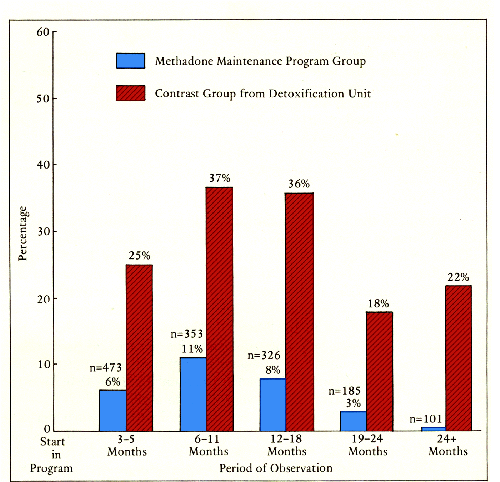
FIGURE 3. Arrests for 544 Men in Methadone Maintenance Program
Three Months of Longer as of March 31, 1968, and Contrast Group
according to Length of Observation
These Dole findings were independently confirmed by Dr. Gearing's evaluation unit. In her study the arrest records (including arrests not followed by conviction) of the addicts on methadone maintenance were compared with the arrest records of other addicts, of the same age and ethnic group, who came to the Morris J. Bernstein Institute during the same month--- but received only detoxification instead of methadone maintenance. The comparison is shown in Figure 3; note that the 101 addicts on the methadone maintenance program for more than twenty four months had an arrest record very close to zero.
In Dr. Gearing's 1969 report, arrest rates had fallen from 6 per 100 man-years the first year on methadone to 3 per 100 man-years the second year on methadone, and to 2 per 100 man-years the third year. This latter rate-one arrest every 50 years--- is lower than the rate (about one arrest every 40 years) for the United States population as a whole, including babes in arms and the aged.
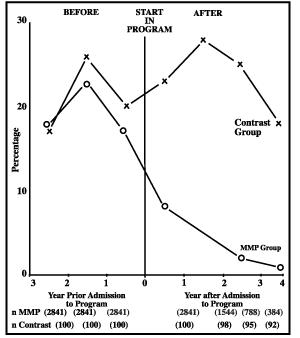
FIGURE 4. Arrests for 2841 Men in Methadone Maintenance Program
Three Months or Longer as of March 31, 1970, and Contrast Group
by Months of Observation
At the 1970 conference, Dr. Gearing's report showed a further improvement; arrests for those staying a fourth year on methadone were only about one per 100 man-years. Figure 4 compares the arrest records of patients on the methadone maintenance program (MMP) with arrests among the "contrast group" of addicts not placed on methadone. The chart summarizes 5,557 man-years of experience on methadone maintenance.
The only possible conclusion is that the overwhelming majority of patients on the Dole-Nyswander program, after years as criminals OD heroin, lead a law-abiding life on methadone maintenance--- and the longer they stay on methadone, the more law-abiding they become.
An even more stringent measure of success is the ability to function effectively in the community: to attend school and get passing grades, to keep house for a family, or to work at a productive job. Here again, the addicts admitted to the methadone maintenance program had many strikes against them. Exorbitantly priced black-market heroin had disrupted their home lives. Few had finished high school; few had any training or special skills; Past employment records were poor. At the time of admission to the program, only 15 percent of 723 male addicts had jobs. That a methadone maintenance program should make them employable or educable seemed a most unlikely possibility.
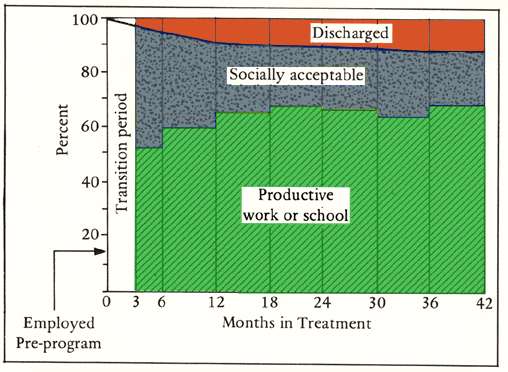
FIGURE 5. Rehabilitation of 723 Male Addicts under Methadone Treatment, as Measured by Productive Employment and Crime-free Status, over a Period of Forty-two Months
Yet, once again, that is precisely what happened. Within three months of starting methadone maintenance, more than half of the male addicts were productively employed or attending school. After a year the proportion rose to nearly two-thirds. Figure 5 shows changes in employment and in socially acceptable--- that is, arrest-free-behavior over a forty-two-month period.
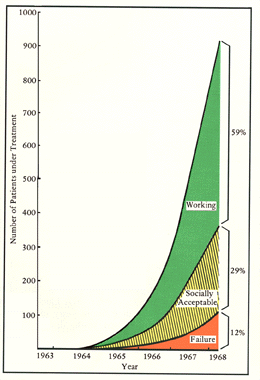
FIGURE 6. Growth of the Methadone Maintenance
Treatment Program
This record, moreover, was not just the result of early enthusiasm. As the program ended its fifth year, the failure ratio remained low, as shown in Figure 6.
"The greatest surprise has been [this] high rate of social productivity, as defined by stable employment and responsible behavior," Dr. Dole reported in 1968. He was prompt to add, however, that "this, of course, cannot be attributed to the medication, which merely blocks drug hunger and narcotic drug effects. The fact that the majority of patients have become productive citizens testifies, in part, to the devotion of the staff of the methadone program--- physicians, nurses, older patients, counselors and social workers." This is a point to which we shall return; experience in other cities indicates that methadone maintenance alone, even without full-scale staffing, has remarkably favorable effects. "The success in making addicts into citizens," Dr. Dole continued, "also shows that an apparently hopeless criminal addict may have ambition and intelligence that can work for, rather than against, society when his pathological drug hunger is relieved by medical treatment. "
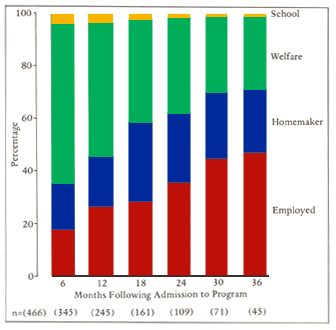
FIGURE 7. Employment Status and School Attendance for 1974 Men in Methadone
Maintenance Three Months or Longer as of March 31, 1970
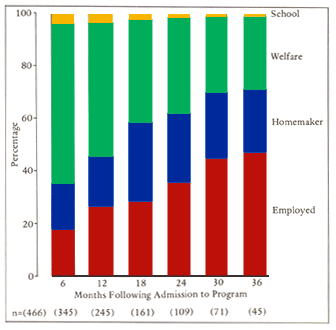
FIGURE 8. Employment Status And School Attendance for 466 Women
in Methadone Maintenance Three Months or Longer as of March 31, 1970
Dr. Gearing's 1970 report showed further improvement in employment and a further decline in welfare recipients during the most recent year. Figures 7 and 8, illustrating this further improvement, are based on 2,880 man-years and 721 woman-years of experience on methadone maintenance.
Once again, the only possible conclusion is that the great majority of addicts placed on methadone, despite such preexisting handicaps as poverty, poor health, little education, prison records, and years of addiction, become self-supporting as well as law-abiding while on methadone--- and the longer a group of addicts remains on methadone, the greater the number of members who become self-supporting.
The 1969-1970 employment record of these ex-addicts is particularly impressive because it occurred during a period of high and rising nationwide unemployment, when even nonaddicts had trouble finding and holding jobs. The record would no doubt have been substantially better had New York City enjoyed full employment. The proportion of methadone maintenance patients on welfare in 1970 was probably only a little higher than the proportion among their neighbors, of the same ethnic group and socioeconomic status, who had never touched heroin.
The employment record of methadone maintenance patients was also remarkable in the face of a systematic discrimination against them. Attention was called to this discrimination in 1971 by Ronald Bayer of New York's Greenwich House methadone maintenance program:
Among the well-publicized consequences of the methadone maintenance approach to heroin addiction is that it allows former addicts to secure regular employment. In the course of the past year, however, it has become clear through numerous reports by methadone patients that a disturbing pattern of job discrimination against former addicts exists in New York.
The problem is particularly serious because three of the largest employers in New York--- the Transit Authority, the Telephone Company and the Post Office --- refuse to hire methadone patients. This situation is aggravated by the fact that these three organizations have generally provided a point of entry to the employment market for many young people who lack special training.
Such discriminatory activity has exceedingly negative effects upon the methadone patient, not only financially (though this aspect should not be minimized in a period of job scarcity) but in terms of his own self-image.
Efforts to work through the Mayor's office have proven unproductive with one bureaucratic hand passing the buck to the next. At stake is the human dignity of those who have for so long lived lives of degradation and who are now striving to save themselves.
If the city and state are serious about the rehabilitation of former addicts, it is imperative that firm action be taken against both public and private employers who are guilty of discriminatory activity.
In testimony before the House Select Committee on Crime on April 27, 1971, Dr. Frances R. Gearing explained bow jobs are secured for methadone patients despite this initial prejudice against them: ". . . It is like getting the first olive out of the bottle. Getting the first man on methadone maintenance employed in a particular industry or group is the tough one. Once they have accepted the first one and they find out that he is a useful citizen, then getting other people into that [industry] is a simpler job."
The patients in the Dole-Nyswander program--- at least until recently were a selected group in several respects. Obviously psychotic addicts were excluded--- but, as noted earlier, there are very few of them. An attempt was made to exclude patients with multiple drug problems those using both heroin and alcohol, for example--- but despite this effort, patients with multiple drug problems did get in. The chief element in selection was the fact that most patients had to remain on a waiting list for many months before acceptance in the program--- but a subsequent comparison of waiting-list patients with patients who were promptly admitted showed no significant difference in success rates. Addicts were accepted only at their own request, not on referral from courts and law-enforcement agencies, the theory being that no one should be forced to accept treatment. But many of the addicts who "volunteered" were in fact just one step ahead of the police. Applicants with criminal charges pending against them were accepted in large number, provided they applied personally rather than being referred by judge, prosecutor, or the police. The restrictions on patients admitted were set initially in 1965 when the program was tentative and experimental. Some restrictions were maintained to ensure comparability of statistics from year to year, while others have since been relaxed. As shown below, the results in methadone maintenance programs without admission restrictions do not differ greatly from the Dole-Nyswander results.
To many readers, the results of methadone maintenance may seem bizarre and inherently incredible. How can an addicting narcotic such as methadone accomplish such transformations?
The answer is, of course, that methadone by itself does not accomplish this--- just as heroin by itself does not transform honest men and women into thieves and prostitutes. The American heroin black market demands $20 a day or so from each addict--- and disaster results from this demand. Addicts who fail to meet it are cut off from their heroin supply; hence every addict meets it if he can. The Dole-Nyswander system of methadone maintenance, in contrast, expects that addicts lead reasonably law abiding lives and get jobs or return to school. Most addicts find it far easier and more satisfactory to meet the expectations of a methadone maintenance program than the demands of the heroin black market; hence most refrain from crime and get jobs.
Heroin addicts who abstain from heroin without going on methadone maintenance, it will be recalled, run about a 50-50 risk of becoming alcoholics or barbiturate addicts. Methadone maintenance greatly lessens but does not wholly eliminate this risk. About 10 percent of the patients on methadone maintenance, Dr. Gearing reports, "continue to present problems with abuse of amphetamines and barbiturates, and ... ten percent demonstrate chronic alcoholism. *
![]()
*Methadone, in short, does not block alcohol or barbiturate effects in the way in which it blocks heroin effects. The development of a drug like methadone, which would prove equally safe and effective against alcohol, or barbiturate addiction, or cigarette smoking, or other addictions, and which would satisfy the craving these drugs produce in addicts, would surely rank among the major triumphs of modem medical science. Yet only trivial efforts are being made to find such drugs.
![]()
"These two problems account for the majority of failures in rehabilitation of patients in the program ."
What kinds of patients do well on methadone maintenance? The answer appears to be all kinds. Efforts to identify particular kinds of patients who do exceptionally well or exceptionally poorly on methadone maintenance have been notably unsuccessful. The tabulation below, for example, shows the varying rates of success by sex, color, age, education, and other characteristics--- with "success" defined as ability to stay on the Dole-Nyswander program without interruption for two years or longer. The success rate varies from group to group only within narrow limits --- from 70 percent to 90 percent.
| Proportion of Patients Who Remain on Dole-Nyswander Methadone Maintenance Program without Interruption for Two Years or Longer |
|
80 percent of males
|
|
80 percent of females
|
|
82 percent of white patients
|
|
81 percent of Puerto Rican patients
|
|
77 percent of black patients
|
|
86 percent of males under 25 when admitted
|
|
76 percent of males over 34 when admitted
|
| 70 percent of females under 25 when admitted |
| 81 percent of females over 34 when admitted |
| 85 percent of those with two criminal convictions or fewer |
| 72 percent of those with three or more convictions |
| 86 percent of those with intact marriages |
| 79 percent of others |
| 79 percent of high-school graduates |
| 80 percent of nongraduates |
| 79 percent of those addicted before age 21 |
| 80 percent of those addicted after 21 |
| 83 percent of those not multiple drug abusers |
| 77 percent of multiple drug abusers |
| 82 percent of those without history of alcohol abuse |
| 75 percent of those with history of alcohol abuse |
| 88 percent of those legally employed on admission |
| 77 percent of those not legally employed on admission |
| 90 percent of those on heroin five years or less |
| 77 percent of those on heroin more than five years |
When two or more criteria are combined, it is true, more striking differences appear. Using computer techniques, Drs. Carl D. Chambers and Dean V. Babst of the New York State Addiction Control Commission, with Dr. Alan Warner of Dr. Dole's staff, were able to discover that an addict who was law-abiding before admission to the program and who had no alcohol problem had a 95.8 percent chance of staying on the program two years, while a patient with seven or more criminal convictions on his record before admission and no employment skill to market had only a 55.6 percent chance. But even the latter patient was far from hopeless. ". . . Ancillary services should be marshalled and focused toward the buffering against these attributes," the three researchers concluded. Instead of being barred from the program, these high risk patients should be admitted and provided with added vocational training and other services.
Finally, all of the figures above refer to success or failure following a single admission to the program. Many patients who are expelled from the program or who leave it voluntarily return and do well the second or third time around. This trend can be expected to continue. Thus in the long run, when successes on subsequent admissions are included in the figures, the success rates may be expected to improve on those here presented.
It is sometimes alleged that while methadone maintenance may be good for society--- cutting down on thefts and other crime--- it leaves the poor addict himself still an addict. Patients on methadone and the staffs of maintenance clinics interviewed in the course of research for this Consumers Union Report expressed a very different view. They stressed the benefits to the individual addict and his family--- the general improvement in health, the reconciliations with parents, the marriages restored, the revolutionary effects on children when one or both parents switch from heroin to methadone, the sense of achievement, the end of the need to prostitute oneself to secure heroin money, the money available for the simple pleasures of life instead of for heroin--- and above all the methadone patient's secure feeling that he is no longer a hunted criminal. They perceived the benefits to society at large as merely incidental to these and many other benefits to the addicts themselves.
![]()
1. Frances R. Gearing, "Successes and Failures in Methadone Maintenance Treatment of Heroin Addicts in New York City," in Proceedings, Third Methadone Conference, Table 1, p. 3.
2. Ibid.
3. Ibid., Appendix B, p. 16.
4. Ibid., Table 1, p. 3.
5. Ibid.
6. Frances R. Gearing, "Progress Report of Evaluation of Methadone Maintenance Program, as of March 31, 1968," in Proceedings of the First National Conference on Methadone Treatment, New York, June 1968, supported by Health Research Council, New York City; New York State Narcotic Addiction Control Commission, and National Association for the Prevention of Addiction (NAPAN); mimeographed, unpublished, p. 5. Hereinafter cited as Proceedings, First Methadone Conference.
7. Ibid.
8. Frances R. Gearing, "Successes and Failures," p. 8.
9. Vincent P. Dole, in Proceedings, First Methadone Conference, pp. 16-17.
10. Ibid., p. 17.
11. Ibid.
12. Vincent P. Dole, Marie E. Nyswander, and Alan Warner, "Successful Treatment of 750 Criminal Addicts," JAMA, 206 (December 16, 1968): 2710-2711.
13. Frances R. Gearing, "Data to Accompany Presentation Evaluation of Methadone Maintenance Treatment Program," paper presented at Second National Conference on Methadone Treatment, New York, October 1969, Fig. 11.
14. Proceedings, First Methadone Conference, p. 10-B.
15. Frances R. Gearing, in Proceedings, Third Methadone Conference, Fig. 9, p. 12.
16. Proceedings, First Methadone Conference, Fig. 3, p. 22.
17. Ibid., Fig. 1, p. 20.
18. Frances R. Gearing, in Proceedings, Third Methadone Conference, Fig. 10, p. 13.
19. Ibid., Fig. 11, p. 14.
20, Vincent P. Dole, in Proceedings, First Methadone Conference, p. 17.
21. Ibid.
22. Ronald Bayer, Letter to the Editor, New York Times, July 20, 1971.
23. Frances R. Gearing, in testimony before House Select Committee on Crime, April 27,1971, p. 116.
24. Frances R. Gearing, "Evaluation of Methadone Maintenance Treatment Program, Progress Report Through March 31, 1969," unpublished, p, 7.
25. Carl D. Chambers, Dean V. Babst, and Alan Warner, "Characteristics Predicting Long-Term Retention in-& Methadone Maintenance Program,"Proceedings, Third Methadone Conference, pp. 140-143.
26. Ibid.
| < Prev | Next > |
|---|












